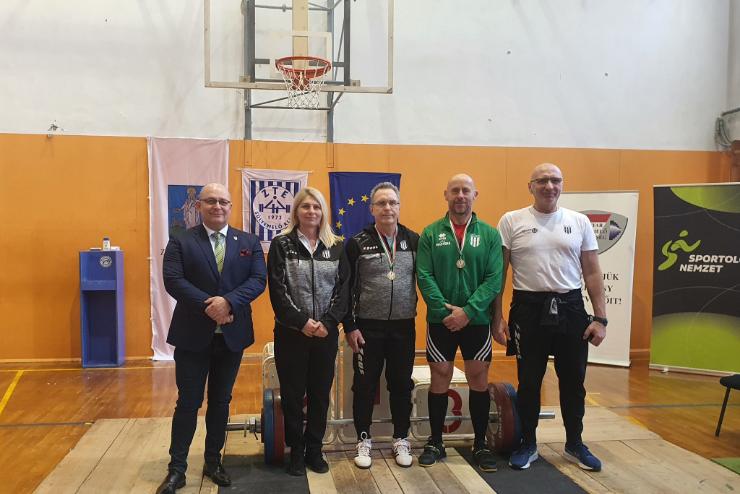On April 20, 2023, as part of the commemorative program series for 120 years of Neumann, the Research Institute of Computer Science and Automation (SZTAKI) and the Neumann János Society for Computer Science (NJSZT) jointly organized the “Development of Hardware at SZTAKI – Computing Behind the Iron Curtain Conference” and Beyond “The event opened Dr. Chapa Benedik, Deputy Director of SZTAKI, Vice President of NJSZT.
The speaker at the event was Dr. Balint Dumulky, Honorary President and Founding Member of the NJSZT, one of the creators of the first galactic computer, the M-3, commissioned in 1959. In his performance Domolky covered the application and interpretation of Neumann’s principles, the early period of American and Soviet computer technology, as well as the terms of construction of the M-3 in Hungary and the characteristics of the machine.
Also presented was László Kún, SZTAKI Development Engineer, who presented SZTAKI’s hardware developments and most successful projects from the 1960s until the end of the 1980s, focusing on technologies such as the Dialog-CNC machine tool controller, GD 71 and GD 80 guided displays, or workstations and minicomputers used in SZTAKI and other organizations.
Speaking of microcomputers, IT historian Gabor Kipps, Head of Communications at NJSZT, gave a presentation on home computers, which are also largely responsible for the mainstream spread of computer technology, from international initiatives to the evolution of needs to the birth of personal computers in feeling today. Képes highlights: The proliferation of minicomputers greatly stimulated interest in information technology, and also touched upon the PRIMO minicomputer, also made in SZTAKI and developed as a computer for the Hungarian people.
The final presentation was made by Dr. Geza Heidegger, SZTAKI’s Senior Scientific Assistant, who dedicated his presentation to SZTAKI’s transition from hardware development to software development. Heidegger touched on the advancement of industrial enterprises, the emergence of the importance of artificial intelligence, and the international activity and recognition of researchers and engineers also associated with SZTAKI.
The presentations were followed by a guided tour of SZTAKI’s permanent hardware history exhibition “From Past to Future” hosted by development engineer Sándor Manno.

Manu made a detailed rundown of the exhibitions that can be seen at SZTAKI, such as the ones already mentioned above
GD 80 guided displays, CNC-Dialog and PRIMO machines, as well as a digital drive for Libegő in Budapest, also made in SZTAKI.
The conference program ended in SZTAKI’s Innovation and Display Space (IDT), which was delivered in the summer of 2022, where visitors can see the institute’s latest scientific presentations in the fields of robotics, manufacturing technology, and machine sensing.
The event photo gallery is available on Facebook by clicking here: https://www.facebook.com/media/set/?set=a.9111842185557102&type=3
The Neumann Society, which turns 55 this year, celebrates the 120th birthday of Janus Neumann throughout the year. You can learn more about Newman’s 120th anniversary by clicking here: https://n120.njszt.hu/
The SZTAKI exhibition of hardware history “From the past to the future” can be visited at the Institute all year round by prior arrangement. Address: 1111 Budapest, Lágymányosi u.
consultation: [email protected]
About SZTAKI
The Research Institute for Computing and Automation (SZTAKI) is the largest and most successful IT research institute in the country. SZTAKI is a widely understood informatics science workshop, a national research base for information technology, computer science and related fields. It mainly deals with the technical, scientific and mathematical issues of IT, but the research covers all areas related to the core issues. In addition to intensive cultivation of basic and applied research, an important task is to make use of the special knowledge gained in the areas of research and development, system design, system integration, consulting and software development. You can read more about SZTAKI here.
(Source: Institute for Computing and Automation Research: https://www.sztaki.hu/)












































